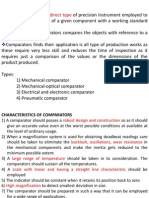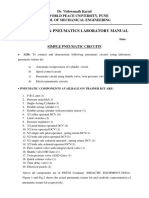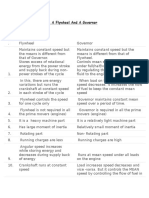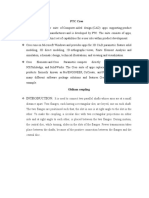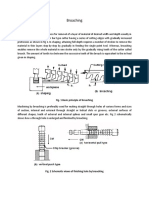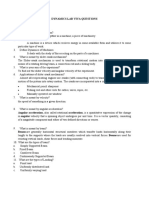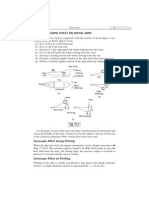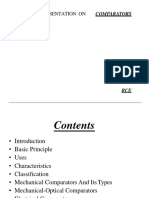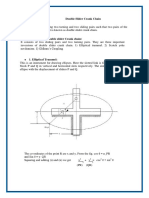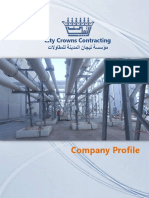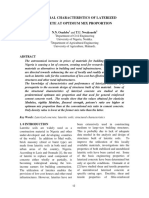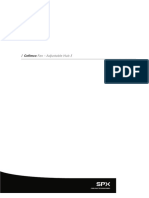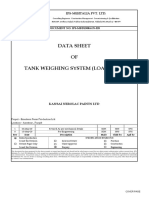0% found this document useful (0 votes)
2K views4 pagesSigma Comparator
The Sigma comparator is an inspection tool used to measure small deviations in surfaces up to 0.25 microns. It works by using a plunger to sense surface unevenness and translate the linear displacement into pointer movement along a calibrated scale, magnifying the measurement between 300-5,000 times. The key components include a plunger, knife edge, y-arm, driving drum, pointer and scale. Displacement of the plunger causes rotation of the pointer, allowing high magnification measurement of deviations.
Uploaded by
Jonathan SequeiraCopyright
© © All Rights Reserved
We take content rights seriously. If you suspect this is your content, claim it here.
Available Formats
Download as PDF, TXT or read online on Scribd
0% found this document useful (0 votes)
2K views4 pagesSigma Comparator
The Sigma comparator is an inspection tool used to measure small deviations in surfaces up to 0.25 microns. It works by using a plunger to sense surface unevenness and translate the linear displacement into pointer movement along a calibrated scale, magnifying the measurement between 300-5,000 times. The key components include a plunger, knife edge, y-arm, driving drum, pointer and scale. Displacement of the plunger causes rotation of the pointer, allowing high magnification measurement of deviations.
Uploaded by
Jonathan SequeiraCopyright
© © All Rights Reserved
We take content rights seriously. If you suspect this is your content, claim it here.
Available Formats
Download as PDF, TXT or read online on Scribd
/ 4
